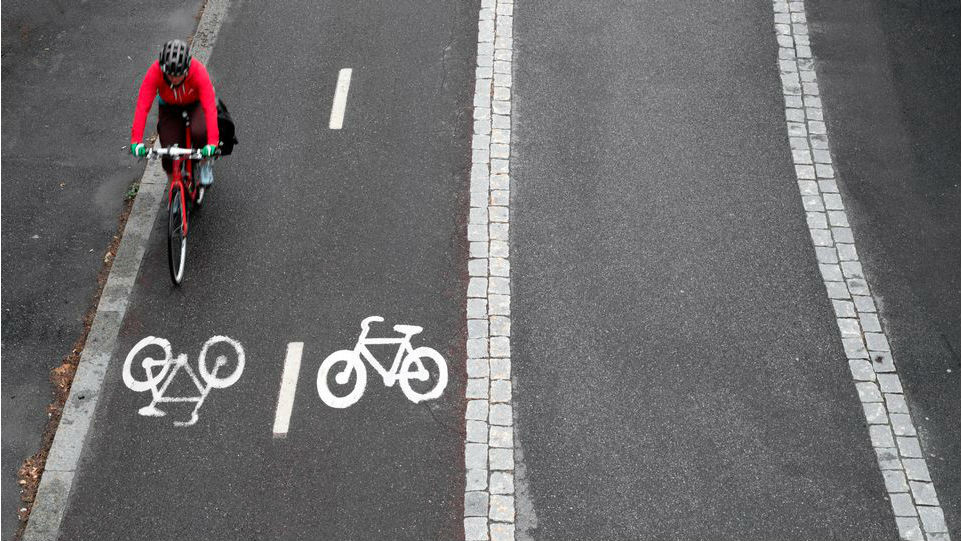Finland’s green scheme to invest €40m in cycling and walking

The Antti Rinne government will be taking forward a proposal by the former Juha Sipilä-led administration to increase walking and cycling in Finland by 30 percent by the year 2030.
The goal is to ensure that Finnish residents complete a total of roughly 450 million new journeys on foot or two wheels, and is part of the previous government’s climate and energy strategy laid down in 2016.
In its government programme released in June, the new administration has pledged 41 million euros to be spent between 2020 and 2022 “for the planning work and project promotion related to walking and cycling.” (Pg. 122)
Of that amount, 10 million euros will be devoted to developing infrastructure to support more walking and cycling.
“The goal is quite challenging, because cycling and walking have declined continuously over the long term. Now we have to turn the trend around and people need to be directed more towards walking, biking and public transportation instead of using private cars,” noted Matti Koistinen, secretary general of the Finnish Cyclists’ Association.
According to the previous government’s proposal, more walking and biking and less time spent sitting behind the steering wheel would also benefit the domestic economy. It estimated that a 20 percent increase in perambulation and cycling would save four billion euros in health costs and would also reduce vehicle emissions by 0.30 million tonnes annually.
Municipal funding for bike lanes
Some of the current government’s green scheme appropriations will be directed to local governments to assist with the construction of infrastructure such as bike lanes. Funding will also be used to establish quality standards for them and to encourage the introduction of company bikes.
The ministry of transport and communications said that the government’s target will require a broad spectrum of measures. However ministry specialist Eleonoora Eilittä said that a great deal of potential lies in encouraging people to opt for a bike or stroll over short distances.
“The long-term trend has seen a decline in the popularity of biking. Last year [the government] prepared a programme to promote walking and cycling. It aims to make walking and cycling more attractive and the government programme earmarks significant resources for it,” Eilittä commented.
She noted that instead of hopping on a bike or travelling on foot, half of two-kilometre trips in Finland are made by car, while the corresponding proportion for a three-kilometre jaunt is 60 percent.
The cyclist association’s Koistinen commended the government for the funds earmarked to promote biking and to improve cycling infrastructure. However he said that even more money should be made available for the cause.
“We need to re-prioritise funding if we want people to walk, cycle and use public transportation more. Over the past few decades we have made it easier for people to drive and now we should do the same for walking, biking and mass transit,” he declared.
Joensuu and Oulu top cycling cities
Some municipalities have already taken the lead in encouraging residents to opt for more low-emissions modes of transportation. Local governments in Joensuu and Oulu in particular have long invested in cycling.
According to Koistinen, even during the winter, residents of Oulu and Joensuu cycle more than people in southern Finland do during summertime.
“The most important factor has been the quality of the traffic environment. Oulu and Joensuu have constructed really good bike lanes for decades and really thought about how people live and move around from the cycling perspective. Winter maintenance of bike lanes is also better than average in these cities,” he pointed out.
The popularity of biking varies widely from city to city. According to the transport ministry the number of cyclists in Finnish municipalities ranges from two to 20 percent.
“It depends a lot on how city planning is handled and where services and jobs are located. There will certainly continue to be regional differences, but in general it is possible to increase cycling throughout the country,” Eilittä concluded.
Related stories from around the North:
Canada: Communities in northern Canada struggling with high fuel prices, CBC News
Finland: Finnish government considers allowing cities to charge congestion fees to slash emissions, Yle News
Norway: Electric car sales skyrocket in Arctic Norway, The Independent Barents Observer
Russia: Arctic electric rally hits the road towards Northwestern Russia, The Independent Barents Observer
Sweden: Sweden’s cars pollute more than previously thought, Radio Sweden
United States: Alaska’s first, electric public transit bus ready to hit Anchorage streets, Alaska Public Media



